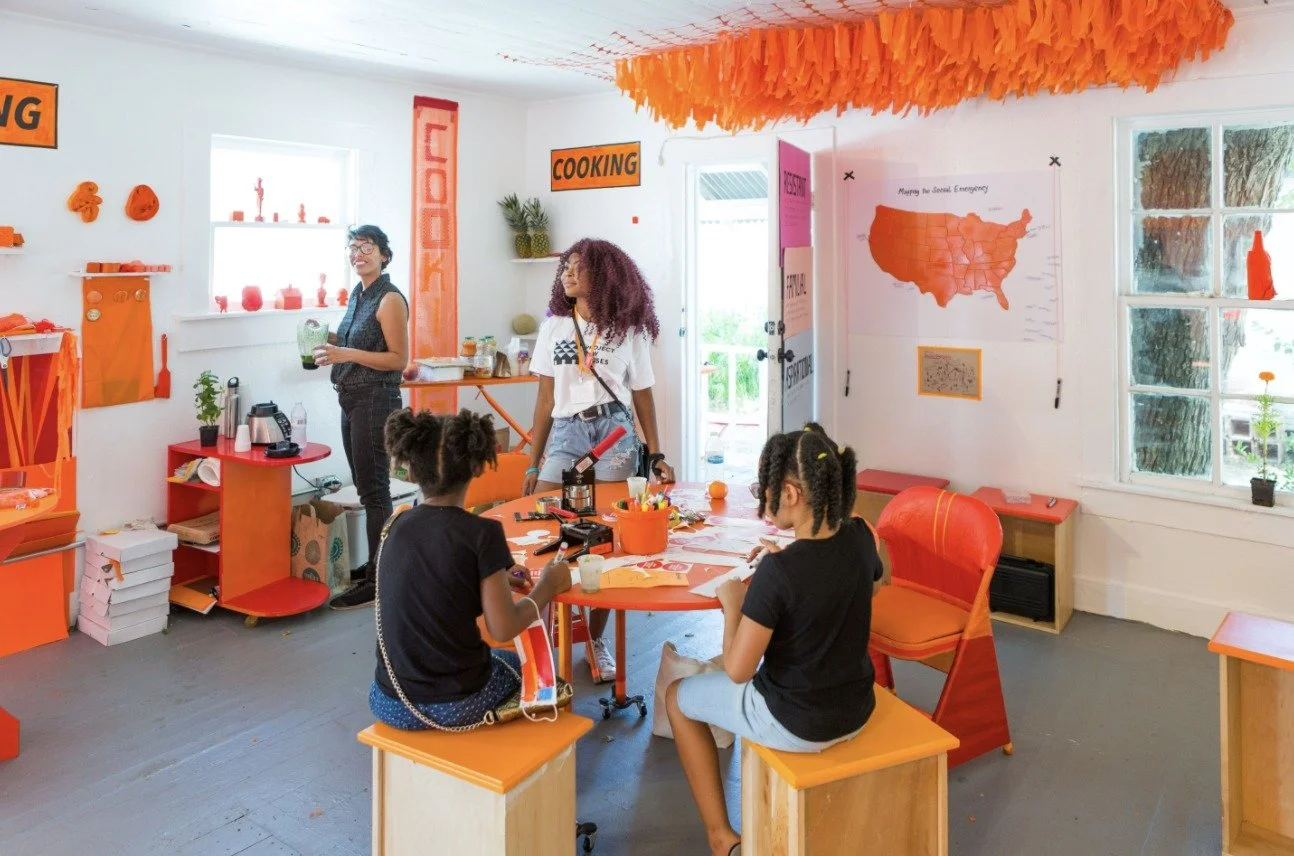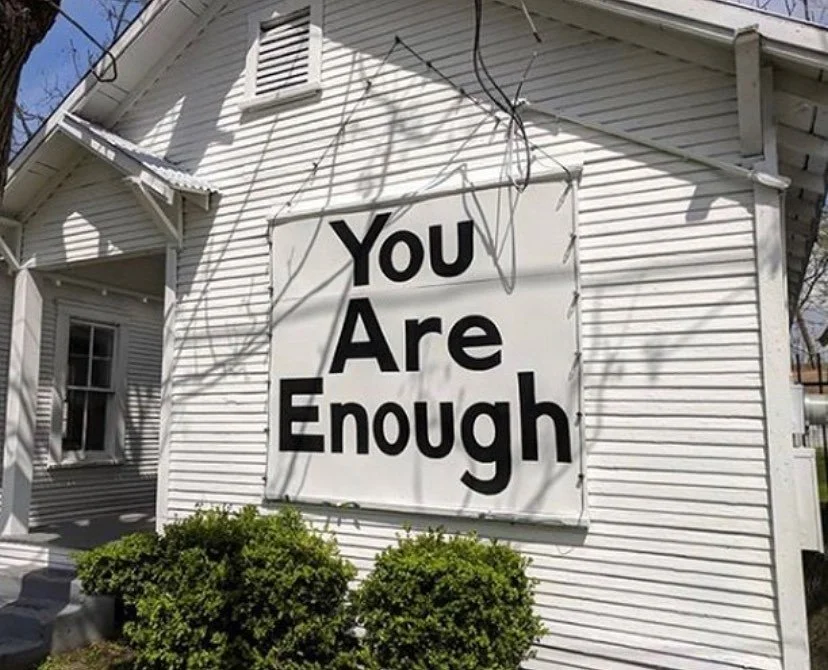Using Art & Neighborhood Design to Combat Gentrification
Anjeanette Gunter
Houston, Texas
Written by Breanne Finch
Art and creativity see no bounds and its impact on the community can have far-reaching effects. Anjeanette Gunter, the Director of Community Enrichment Initiatives at Project Rowhouse, understands this all too well. Project Rowhouse is housed in the Third Ward, one of Houston’s oldest African-American neighborhoods dedicated to collective creative action. As someone who was a young performer herself, spoken word and writing being her chosen creative outlets, Anjeanette’s current career path seems to have chosen her.
Throughout her journey, she has worked as an elementary school teacher and has also had an illustrious career in finance, always seeming to find herself in a role of service to helping those around her. Her role now at Project Rowhouse envelopes community engagement and art advocacy, proving her commitment to helping others has not ceased. Although she describes her work as half reporting and paperwork, the other half deals with hands-on community engagement, allowing her to immerse herself in the needs of the community face to face.
With Project Rowhouse, she feels it perfectly merges her background in financial development and education/social service, allowing all of the seeds that were planted throughout her experiences to harvest right in the Third Ward. It is by no coincidence that her talents were able to blossom in the Houston community; it is deeply rooted due to her parents being born and raised there. She recalls memories laced with images of brown faces sitting on the porches and walking along the streets of Third Ward, making her place at Project Rowhouse a full circle experience.
Photo by Peter Molick
Photo by Alex Barber taken from Round 53: The Curious Case of Critical Race...Theory?. Curated by Danielle Burns-Wilson. Installation by The University of Houston- Downtown Center for Critical Race Studies and Kindred Spirits Design Co.
Brian Ellison's installation titled: "We are Enough (Still)," from Round 47: The Act of Doing: Preserving, Revitalizing and Protecting Third Ward, organized by Ryan Dennis in collaboration with Dr. Assata Richards of Sankofa Research Institute.
She says there is much diversity surrounding Third Ward and the faces she now sees are of all different shades, walking their dogs or running around Emancipation Park. While many minority communities have faced the stark reality of gentrification, neighborhoods being swiped from under legacy residents, Project Rowhouse has been working hard to preserve the culture of the Third Ward. Although after the announcement of a $33.6 million renovation to Emancipation Park in 2012, many developers were attracted to the area making it a difficult feat.
One way the organization has combated this is by purchasing and preserving land in the area to keep it in the community's hand. PRH now boasts an impressive five city blocks and forty homes that they use to serve their community from beautification of the neighborhood by upcoming artists, to providing groceries for the local residents. They offer residencies, grants, proposals, fellowships, and through their public arts program, they host artist rounds, community galleries, and studios for artists to showcase their work, which is vital due to limited resources for artists.
Their wide range of services may seem to cross the boundaries of an arts organization for some, but according to Anjeanette at Project Rowhouse, they allow their community to lead their own advocacy, choosing instead to support what the community says they need versus telling them what they need. Project Rowhouse has found a way to bridge the gap between art and neighborhood development.
Images by Alex Barber taken from Round 48: Beyond Social Practice, Curated by Ryan Dennis. Installation titled SERC Social Emergency Response Center (SERC) by The Design Studio for Social Intervention's Maria Molteni and Tiago Gualberto.
Images by Alex Barber taken from Round 48: Beyond Social Practice, Curated by Ryan Dennis. Installation titled SERC Social Emergency Response Center (SERC) by The Design Studio for Social Intervention's Maria Molteni and Tiago Gualberto.
Photo by Alex Barber taken from Round 46: Black Women Artists for Black Lives Matter at Project Row Houses.
Their fundamental philosophy is based on the idea of social sculpture, essentially asserting that design is everywhere, and everyone is an artist. Their mission at Project Rowhouse is as Danielle Burns Wilson, their Curator & Art Director, describes as creative place keeping, engaging with the existing arts, culture, and creativity of the neighborhood, and designing programs and projects that celebrate those values. It is not just a matter of preserving buildings, which they do, but also the cultural memories associated with it. It is a matter of maintaining the cultural identity of the community.
Partnering with the Emancipation Park Conservatory was a big way of doing this. Anjeanette described to me the importance of the park as a historical landmark, where formers slaves bought the land and has since been used as a meeting place to celebrate Juneteenth. By making sure this park stayed a cultural staple, Project Rowhouse helped maintain the memories and cultural imprint.
Alexandra Folino's Round 50 installation, titled "A Call To Action: Improving Black Maternal Health in Houston," from Round 50: Race, Health and Motherhood, curated by Ryan Dennis.
Another way Project Rowhouse keeps the cultural community alive is through Artist Rounds, where they choose artists twice a year to showcase their art. Also, through their Financial, Artistic, Career & Empowerment Center (F.A.C.E), which focuses on community wealth building and helping gain resources for those in the community. Anjeanette believes the power of Black people and Black spaces are undermined, and that PRH is simply creating leadership opportunities where leadership skills already exist.
Coming soon, they will have a Southern Survey Biennial, which was a call and response to the lack of opportunities artist who live and work in the south receive. Anjeanette will also be working alongside her team to expand the Building Blocks of Creative Careers, which sits proudly under their F.A.C.E umbrella, by hosting a showcase for their first cohorts this August. Project Rowhouse will also be celebrating their 30th Anniversary next year, a legacy that must be applauded. It is through art programs like these that art can continue to change the narrative.








